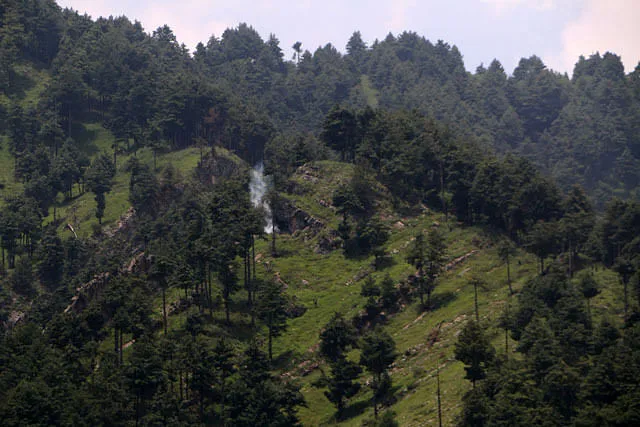Srinagar, June 18: ‘Har Gaon Hariyali’ program, a unique initiative launched by the government of Jammu and Kashmir, in consonance with the vision of ‘Green Jammu and Kashmir’ drive has proved instrumental towards ensuring sustainable development besides promoting climate justice across the Union Territory.
The ambitious program is also contributing tremendously towards increasing the carbon stock, especially in villages located near the degraded forests of J&K.
The Green Jammu and Kashmir drive itself is in commensuration with the National Forest Policy 1988 and the Jammu and Kashmir Forest Policy 2011 which envisages afforestation on all degraded and denuded lands in the union territory within and outside forests.
In the words of Lieutenant Governor, Manoj Sinha, the ‘Green Jammu and Kashmir‘ campaign aims at creating a people’s movement at a massive scale with the involvement of all stakeholders particularly village panchayats, women, students, Urban Local bodies, NGOs and civil society.
“Our aim is to bring a two-thirds geographical area of Jammu and Kashmir under the forest and tree cover. The forest and tree cover in Jammu and Kashmir is about 55 per cent, which is substantially higher than the national average of 24.56 percent” Lieutenant Governor maintained.
Significantly, 1.35 crore plantations have been targeted for the year 2022-23, of which, 26.50 lakh saplings will be planted with active involvement of Village Panchayat Plantation Committees (VPPCs) to create green assets in the Gram Panchayats.
To ensure widespread people’s participation in government-sponsored plantation drives, the government is adopting a multi-disciplinary convergence model linking school-level eco clubs, Village Panchayat Plantation Committees and MGNREGA works to various plantation and protection drives.
The biggest achievement under Har Gaon Hariyali is that a massive convergence programme is taking place by dovetailing funds under MG-NREGA and the afforestation programme of the forest department.
Under low-cost mode of greening and increasing the forest and tree cover, more than 50 lakh seeds/grass-slips are likely to be planted during the year 2022-23.
Notably, NITI Aayog in its `State Energy and Climate Index’ report has revealed that Jammu and Kashmir has 94.5 tonnes of carbon stock per hectare of forest land while Andaman and Nicobar tops the list with 96.4 tons of carbon stock per hectare.
Carbon stock refers to the amount of carbon stored in forests in the form of biomass, soil, deadwood, and litter. An increase in green cover and carbon stock indicates a healthy trend to deal with global warming.
A recent Forest Survey of India report revealed that Jammu and Kashmir has witnessed an increase in the total forest cover in the last three years. The report said that the emission intensity of Carbon in Jammu and Kashmir forests is 98.2 tonnes per hectare.






